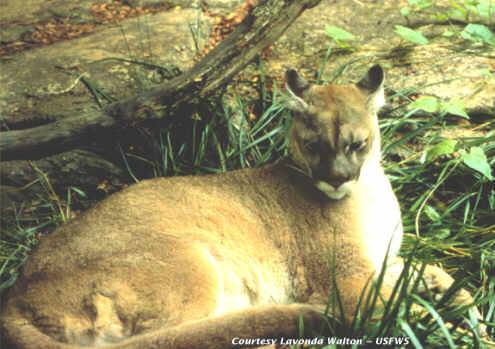Eastern Cougar

Extinct 2011
A member of the big cat family, the Eastern Cougar was believed to actually be a subspecies descending from the North American Cougar. Some experts however, are questioning this as they believe that all types of North American cougar are actually their very own subspecies. This member of the big cat family, noticeable for its large size, long tail, and tan colour was actually referred to by a number of different names, including: catamount, puma, cougar, painter, and mountain lion. Meat eaters, eastern cougars used to prey on animals such as deer, small mammals, and wild pigs. They used to kill their larger sized prey via suffocation, by biting their prey on their throats and squeezing until their prey’s windpipes actually collapsed. When killing smaller prey such as small deer, often times their prey would simply die from a broken neck, often brought on by one single bite. Unfortunately, as of 2011, eastern cougar numbers were deemed too low for them to continue breeding and so the cat was deemed extinct. Since the 1930’s however, eastern cougar numbers had been rapidly dwindling, so their extinction came as no real surprise. In fact, by the 30’s, they were already referred to as “ghost cats” because they were now so rare.
Habitat
Eastern cougars, not surprisingly, used to thrive mainly in eastern states in the U.S including Florida, and most of the South East including Texas and parts of Tennessee. They were very shy in nature, as most cats are, and so they stayed well clear of towns and cities and instead resided out in the wilderness, often in wooded areas such as forests dense with thick foliage.
Why did they become extinct?
Eastern cougars used to primarily prey on white-tailed deer. By the late 1800’s, white-tailed deer were almost entirely eradicated and as a result, the cougars began to die out as they simply had no prey to feed upon. As well as this, not surprisingly, human interference played a big part in their extinction as human activities such as logging, mining, and basic human settlement and development began disturbing their natural habitats, meaning the big cats simply had nowhere to live.